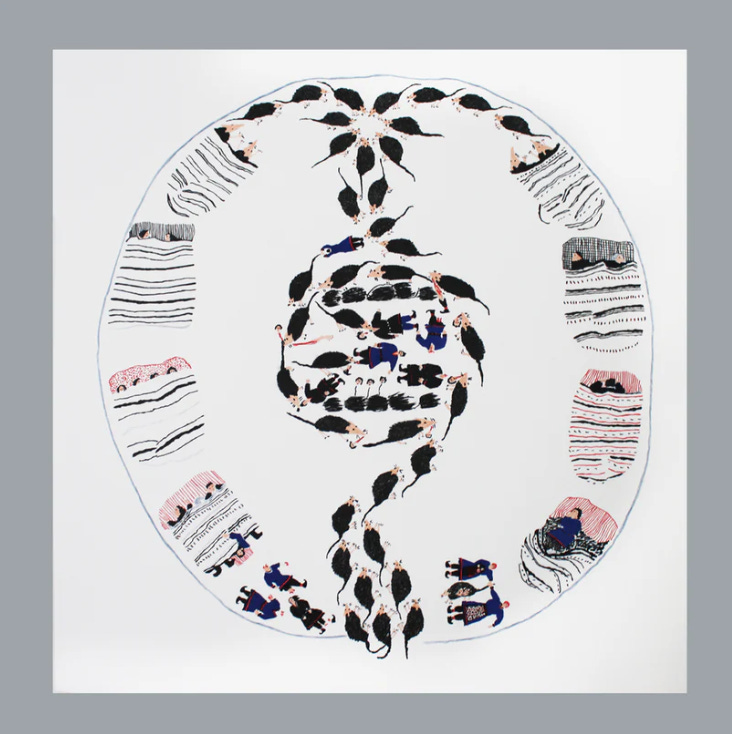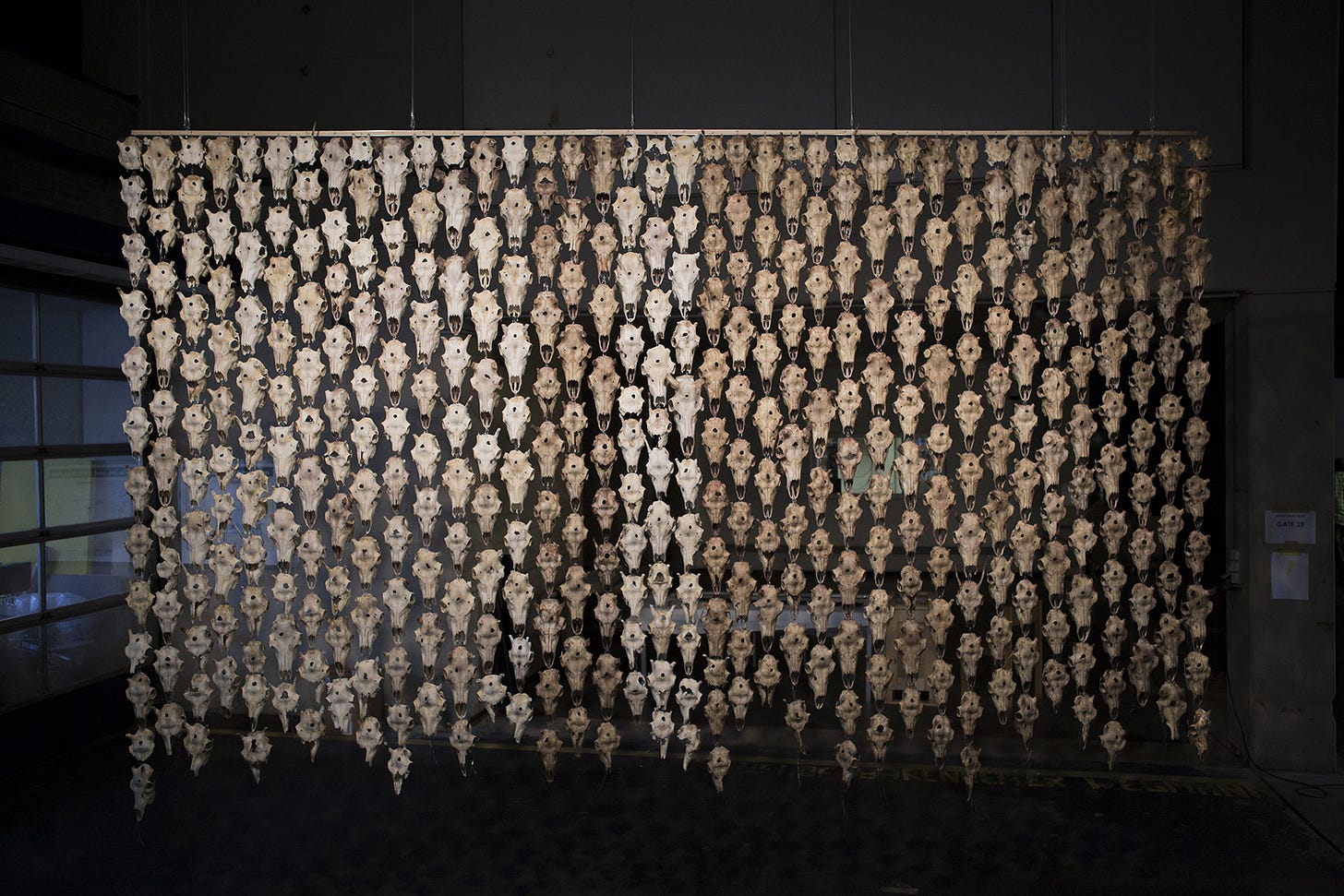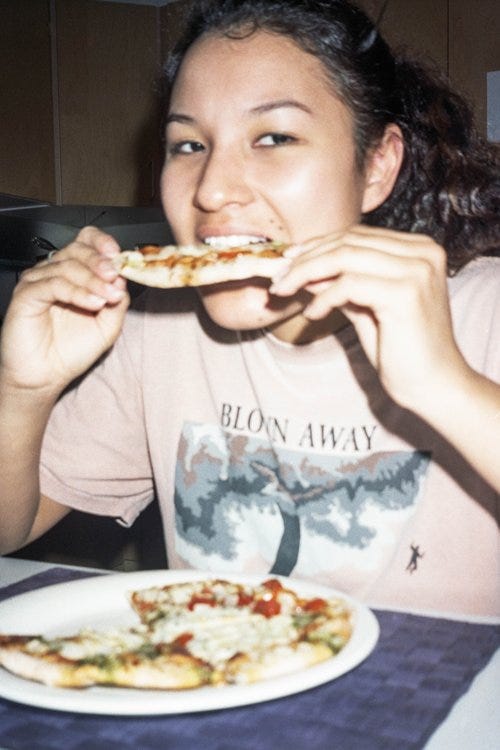The Rise of Contemporary Arctic Indigenous art
Breaking Stereotypes: The New Wave of Arctic Indigenous Artists
I recently watched Twice Colonized, a highly moving documentary featuring renowned Inuit Greenlandic lawyer and activist Aaju Peter. The film provides a profound insight into the struggles and resilience of Indigenous peoples in the Arctic, shedding light on their efforts to raise awareness about critical issues affecting their communities.
Inspired by Aaju Peter’s story, I wanted to go deeper into Greenlandic, Sápmi, and Inuit art discovering the profound connections between their artistic expressions and their traditions, environment, and cultural preservation.
This personal exploration revealed the powerful ways in which these artists are using their craft to protest injustices and sustain their ways of life, which the Western world, including myself, has often overlooked in the pursuit of progress.
Through their art, these creators bring to the forefront the richness of their heritage and the urgent need to respect and protect their cultures and environments. Their works not only challenge stereotypes but also offer a compelling narrative about the enduring significance of Indigenous identities in a rapidly changing world.
In recent years, Indigenous artists from the Arctic regions have emerged as formidable voices on the global art scene. Their work not only showcases extraordinary creativity but also serves as a powerful platform for addressing pressing social, environmental, and cultural issues.
In this post, I try to synthesize how contemporary Arctic Indigenous artists are using their craft to preserve traditions, protest injustices, and shape the future of their communities.
Let’s begin.
Bridging Tradition and Modernity
Arctic Indigenous artists are masterfully blending traditional elements with contemporary techniques and themes:
Martin Brandt Hansen (b. 1990), a Greenlandic sculptor, describes his style as "Ethno-Gothic." Hansen combines Inuit mythology with modern aesthetics to explore the evolving nature of Greenlandic identity. His ceramic sculptures incorporate glazes made from elements of Greenlandic nature, creating a unique fusion of traditional and contemporary art. For example, his work "X-RAY TARGETS" explores mythology from Inuit culture through his interpretation of the classic tupilaq figure, challenging traditional scales and materials.

Installation view X-Ray targets, Andersens 2022. Source Britta Marakatt-Labba (b. 1951), a renowned Sámi artist, creates intricate embroidered tableaus that weave together everyday Sámi life with ancient mythology. Her monumental work Historjá, a 24-meter tapestry, narrates the history and cosmology of the Sámi people. Marakatt-Labba's art has gained international acclaim for its unique storytelling about Sámi mythology, their relationship with nature, political struggles, and resistance.

Nightmare, Britta Marakatt-Labba, Source: Galleri Helle Shuvinai Ashoona (b. 1961), an Inuit artist, produces surreal, fantastical works that merge traditional Inuit imagery with global influences. Her drawings often feature otherworldly landscapes populated by hybrid creatures, reflecting the complexities of modern Inuit life. For instance, her work "Hunting Monster" (2015) demonstrates her expert realization of highly detailed northern landscapes with hybrid creatures.

Shuvinai Ashoona, Tent Surrounded by Rocks, 2006. Source: Art Canada Institute
These artists demonstrate how Indigenous cultures can maintain their unique identities while engaging with the contemporary world, creating a dynamic dialogue between past and present.
Art as Environmental Advocacy
With the Arctic facing severe environmental challenges, many Indigenous artists are using their work to raise awareness and call for action:
Máret Ánne Sara, a Sámi artist, creates provocative installations that protest industrial encroachment on traditional lands and the threat it poses to reindeer herding, a cornerstone of Sámi culture. Her powerful work "Pile o' Sápmi" (2017), featuring a curtain made of 400 reindeer skulls, drew international attention to the forced slaughter of reindeer in Sápmi.

GIELASTUVVON (SNARED) 2018, Máret Ánne Sara, Source. 
Pile o' Sápmi, Máret Ánne Sara, Source. 
DRESSED WITH HERITAGE - CROWNED BY FOREIGN FATE, 2019, Source. Inuuteq Storch, a Greenlandic photographer, uses archival projects and contemporary photography to study Greenlandic nationality and cultural roots. His work challenges stereotypes created during the colonial era and fights to keep Greenlandic identity alive in the face of rapid environmental and social change.

Inuuteq Storch, Keepers Of The Ocean. Source.
Through their art, these creators are bringing global attention to the environmental crises facing their homelands, using their unique perspectives to illuminate the interconnectedness of culture and environment.
Challenging Stereotypes and Asserting Identity
Contemporary Arctic Indigenous artists are breaking away from expectations and stereotypes, asserting their right to define their own identities:
Annie Pootoogook (1969-2016) was known for her unflinching depictions of contemporary Inuit life. Her drawings portrayed everyday scenes as well as difficult subjects like addiction and alienation. Pootoogook's work, such as "My Grandmother, Pitseolak, Drawing" (2001-2) and "Preparing for the Women's Beluga Feast" (2001-2), helped bridge the gap between Inuit art and the broader contemporary art world (Art Canada Institute).

Annie Pootoogook, War Is Over, 2003. Source. The Sámi artist collective Suohpanterror uses poster art, performance, and direct-action protest to raise awareness about issues affecting Sámi communities. They created powerful visual messages to protest against a proposed Transarctic railway that would have impacted reindeer herding districts.

St1 Borderlands, Suohpanterror, Source. Outi Pieski, a contemporary Sámi artist, embodies the Sámi philosophy of soabadit (positive reciprocity) and duodji (traditional Sámi crafts) in her work. Her installations often incorporate traditional Sámi weaving techniques, creating a dialogue between traditional crafts and contemporary art.

Outi Pieski, Cuolmmadit. EMMA 12.9.2018 – 6.1.2019., Photo: Ari Karttunen / EMMA. Source
These artists are reclaiming narratives about their cultures and pushing back against outdated or romanticized views of Indigenous life, offering nuanced and authentic representations of their communities.
Global Recognition and Impact
Arctic Indigenous artists are increasingly gaining international recognition, bringing their perspectives to global audiences:
The 2022 Venice Biennale featured a Sámi pavilion for the first time, showcasing artists who sought to "defend Sámi perspectives" on an international stage
Inuit artists like Annie Pootoogook and Shuvinai Ashoona have had their work exhibited in major galleries worldwide, challenging the boundaries between Indigenous and contemporary art.
Greenlandic artist Inuuteq Storch became the first Greenlandic artist to show at the Venice Biennale in 2024, marking a significant milestone for Greenlandic art on the global stage (Ny Carlsbergfondet).
This increased visibility not only celebrates these artists' talents but also raises awareness about Arctic Indigenous cultures and the challenges they face, fostering cross-cultural understanding and dialogue.
Final Words
Contemporary Arctic Indigenous art is far more than a collection of beautiful objects—it is a powerful form of cultural expression, political activism, and social commentary. As these artists continue to push boundaries and explore new forms of expression, they ensure that Indigenous voices are heard in global conversations about art, identity, and the future of our planet.
From Máret Ánne Sara's provocative installations to Annie Pootoogook's honest depictions of daily life, from Britta Marakatt-Labba's narrative embroideries to Martin Brandt Hansen's Ethno-Gothic sculptures, these artists are creating a rich tapestry of contemporary Arctic Indigenous art. Their work not only preserves cultural heritage but also actively shapes the future of their communities, challenging viewers to reconsider their perceptions of Indigenous life and the Arctic region as a whole.
As the world grapples with issues of climate change, cultural preservation, and social justice, the voices of Indigenous artists become increasingly vital. Their unique perspectives offer invaluable insights into sustainable ways of living, the importance of cultural diversity, and the resilience of Indigenous communities in the face of ongoing challenges.
The rise of contemporary Arctic Indigenous art on the global stage represents a significant shift in the art world's recognition of diverse voices and perspectives. It challenges the traditional Western art canon and expands our understanding of what contemporary art can be.
It serves not only as a mirror reflecting the complexities of modern Indigenous life but also as a window through which the wider world can gain a deeper understanding of these rich and vital cultures and traditions.
Until next time. By any art necessary.




